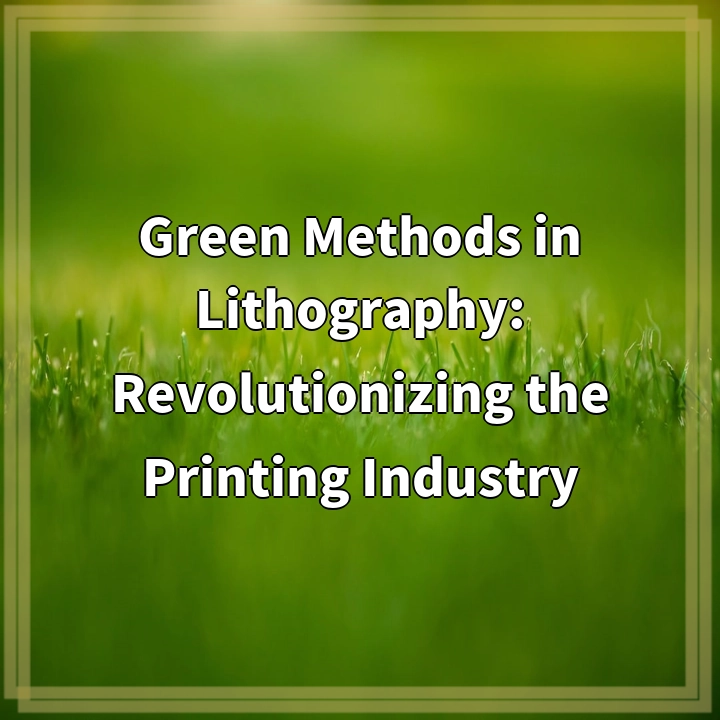Physical Address
304 North Cardinal St.
Dorchester Center, MA 02124
Physical Address
304 North Cardinal St.
Dorchester Center, MA 02124

Green methods in lithography refer to sustainable and environmentally friendly practices adopted within the printing industry. Traditional lithographic processes have significant negative environmental impacts, including high water and energy consumption, the use of toxic chemicals, and the generation of hazardous waste.
Traditional lithography techniques pose challenges to the printing industry and the environment due to their drawbacks:
Traditional lithography relies on large quantities of water for plate development, fountain solutions, and ink applications. This strains water resources and requires substantial energy for water treatment and heating.
Chemicals such as alcohol-based solvents, volatile organic compounds (VOCs), and heavy metals are commonly used in lithographic processes. Improper management of these substances can harm human health and the environment.
The traditional lithography process generates significant amounts of waste, including unused chemicals, plates, and contaminated water. Proper disposal of these materials can be expensive and poses environmental risks if not handled according to regulations.
The printing industry has been progressively adopting green methods to mitigate the environmental impact of lithography:
Waterless lithography technologies eliminate the need for continuous water supply, reducing water usage and associated energy consumption for water treatment and drying.
Green methods promote the use of soy and vegetable-based inks derived from renewable resources. These inks have lower VOC emissions, reducing the environmental impact of lithographic printing.
Implementing recycling programs for plates, ink cartridges, and paper waste significantly reduces the environmental impact of lithographic printing. Proper waste management ensures the safe disposal of hazardous materials and the recycling or reuse of non-hazardous materials.
Green methods in lithography represent a shift towards more sustainable and eco-friendly practices within the printing industry. By adopting waterless lithography, using soy and vegetable-based inks, and implementing recycling and waste reduction programs, the industry can significantly reduce its environmental footprint. These green methods not only address the real-world problems associated with traditional lithography but also contribute to a more sustainable future for the printing industry.
Adopting waterless lithography technologies eliminates the need for continuous water supply, reducing water usage and associated energy consumption for water treatment and drying.
Using soy and vegetable-based inks derived from renewable resources helps reduce the environmental impact of lithographic printing by lowering VOC emissions.
Implementing recycling programs for plates, ink cartridges, and paper waste ensures proper waste management and reduces the industry’s environmental footprint. Recycling and reusing materials help minimize the generation of hazardous waste.
By adopting waterless lithography, incorporating soy and vegetable-based inks, and implementing recycling and waste reduction programs, the printing industry can significantly improve its environmental sustainability. These solutions address the high water and energy consumption, usage of toxic chemicals, and generation of hazardous waste associated with traditional lithography. Embracing green methods in lithography is not only beneficial for the environment but also contributes to a more sustainable future for the printing industry.
If you’re wondering where the article came from!
#